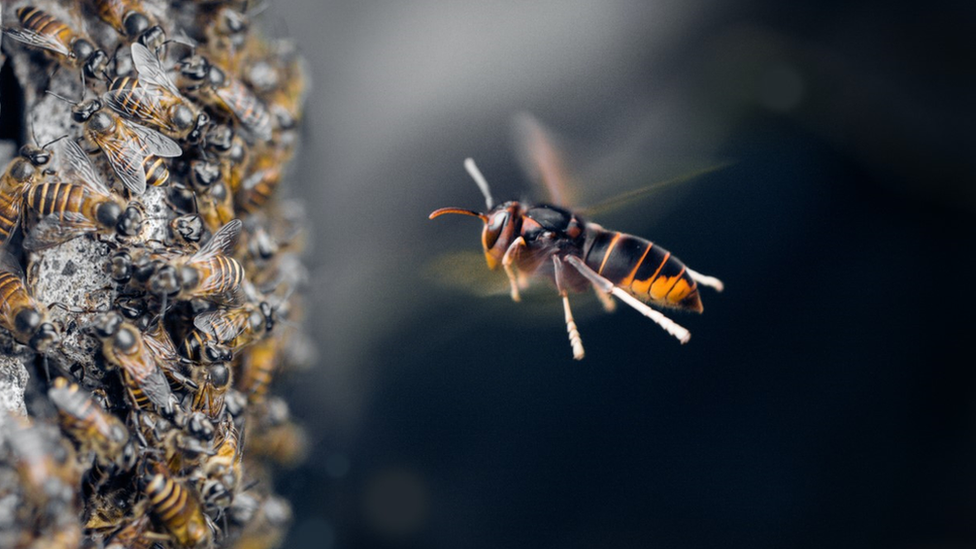Bees 'scream' when giant Asian hornets attack
- Published
- comments

Asian honeybees create defence signals and 'scream' when they are about to be attacked by giant Asian hornets.
Asian hornets, also known as 'murder hornets', can destroy a honeybee hive in a matter of hours.
Now scientists have discovered that bees use strategies to protect their nests and warn their nest-mates by producing 'shrieks, fear screams and panic calls'.
The response is similar to what other creatures, including monkeys, birds and meerkats, also do when they are under threat.
More brilliant buzzing bee stories here
Why are bees so important?
The study, published in Royal Society Open Science journal, examined three apiaries (a collection of beehives), containing over 200 honeybee colonies.
Researchers used special microphones to record the noises the bees made - these sounds are also known as 'pipes' and are created by the honeybees wings and bodies.
Giant Asian hornets have large yellow-orange heads and big black eyes
How dangerous are giant Asian hornets?
Asian honeybees' most persistent and damaging predator is the Asian hornet.
The insects, roughly the size of a matchbox, have large yellow-orange heads, prominent black eyes, and a black and yellow striped tummy.
The Asian giant hornet's life cycle begins when queens come out of hibernation and begin to feed and seek out places to build their nests. Once their habitats are built, worker hornets are sent to find food.
With their sharp, spiked jaws, the hornets kill honeybees, and use them to feed their young.
Their nests have spread to other parts of the world, including the US and parts of Europe.
When their nests are found they are destroyed in an effort to protect honeybee colonies, which are already under threat from factors including climate change, the use of pesticides and destruction of their habitats.
- Published25 October 2022
- Published19 May 2020
- Published7 January 2019
